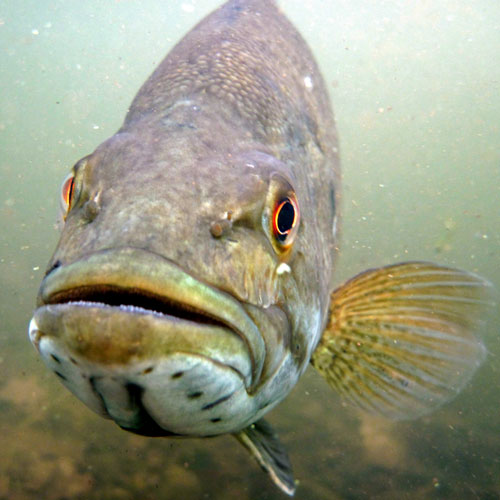In February 2022, an angler caught a smallmouth bass while fishing on the Gardner River at its confluence with the Yellowstone River, just outside of Yellowstone National Park.
Smallmouth bass are not native to the Yellowstone River Watershed.
An established population of smallmouths could pose threats to native fish in the upper Yellowstone River and others, according to Montana Fish, Wildlife & Parks (FWP).
How the bass arrived at this location is unknown. It is illegal for people to move live fish from one waterbody to another without prior authorization from FWP.
Anglers have previously reported finding smallmouth bass in two locations on the upper Yellowstone River in the past seven years: Two smallmouth bass were caught at the Highway 89 bridge downstream of Livingston, and one near Emigrant. One smallmouth bass has also been found in the Shields River, a tributary to the Yellowstone east of Livingston.
FWP fisheries staff have not found smallmouth bass during yearly sampling efforts in the upper Yellowstone River.
One of FWP’s primary management goals in this area is to protect native Yellowstone cutthroat trout, which spawn in the tributaries and upper reaches of the Yellowstone River. An established population of invasive smallmouth bass could occupy the same areas, preying on and displacing trout and other native fish.
Anglers are the primary means of managing smallmouth bass where needed. FWP staff are preparing a proposed emergency rule for the Fish and Wildlife Commission to consider, which could require anglers to kill and report any smallmouth bass caught in the upper Yellowstone River.
Until any proposed rules can be implemented, anglers are asked to voluntarily kill, remove, and document any smallmouth bass caught in the Yellowstone River and its tributaries between the Springdale Fishing Access Site east of Livingston upstream to the Yellowstone National Park boundary and provide them to FWP for testing.
In March, the National Park Service (NPS) issued a statement from Yellowstone National Park Lead Fisheries Biologist Todd Koel about Montana FWP’s announcement of the smallmouth bass found in the Gardner River, north of Yellowstone National Park:
“Smallmouth bass are an invasive predatory species that will threaten our wild and native trout populations if they become established in the upper Yellowstone River. Since anglers are highly effective at suppressing invasive fish in waters where they coexist with native species such as cutthroat trout, they will be required to kill and report any smallmouth bass caught in Yellowstone National Park when the fishing season opens Memorial Day weekend. Additionally, Yellowstone National Park and USGS biologists will be sampling the Gardner and Yellowstone rivers, upstream of where the invasive smallmouth bass was caught. Over the next few weeks, biologists will monitor these rivers closely to gauge the possible extent of the invasion. Our goal is to protect native fish populations and natural ecosystems. We will do everything in our power to prevent the establishment of smallmouth bass in the park and prevent them from preying on and displacing trout and other native fish.”
The Yellowstone river is home to 11 native species; Arctic grayling, cutthroat trout (Yellowstone and westslope), mountain whitefish, longnose dace, speckled dace, redside shiner, Utah chub, longnose sucker, mountain sucker, Utah sucker, and mottled sculpin.
The river also contains 5 nonnative species; brook trout, brown trout, lake trout, lake chub, and rainbow trout.
sources: Montana Fish, Wildlife & Parks, National Park Service
